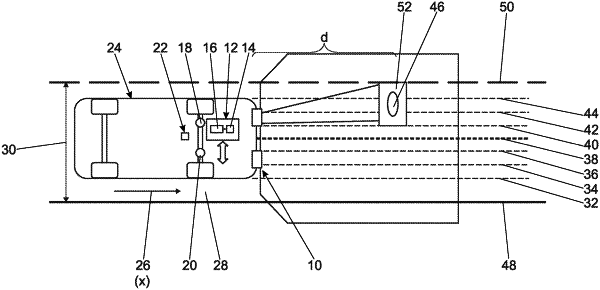| CPC B60Q 1/143 (2013.01) [G06V 20/58 (2022.01); B60Q 2300/054 (2013.01); B60Q 2300/112 (2013.01); B60Q 2300/132 (2013.01); B60Q 2300/324 (2013.01)] | 17 Claims |

|
1. A method for vehicle lighting-based roadway obstacle notification for a motor vehicle which has a vehicle headlamp system with a controllable light distribution, at least one camera with an optical axis aligned parallel to a forward driving direction of the motor vehicle, and at least one electronic control unit operatively connected to the at least one camera and to the vehicle headlamp system, the method comprising the steps of:
moving the motor vehicle along a roadway;
recording camera data of a part of a roadway surface lying in front of the motor vehicle in the forward driving direction using the camera, wherein a recorded part of the roadway surface includes a multiplicity of roadway detection paths;
individually evaluating the camera data relating to the roadway detection paths in relation to ranges and at least one quantity from among a magnitude of a vertical dimension (hi) of the roadway, a magnitude of a gradient (gradx;i) of the roadway in the forward driving direction, and an instantaneous speed (vmom) of the motor vehicle;
detecting a roadway anomaly in response to compliance of at least one from among a magnitude of a vertical dimension (hi) of the roadway, a magnitude of a gradient (gradx;i) in the forward driving direction, and an instantaneous speed (vmom) of the motor vehicle with at least one respective predetermined condition; and
controlling the vehicle headlamp system as a function of the compliance with the respective predetermined condition in order to illuminate a part of the roadway corresponding to one of the roadway detection paths in which the roadway anomaly has been detected.
|